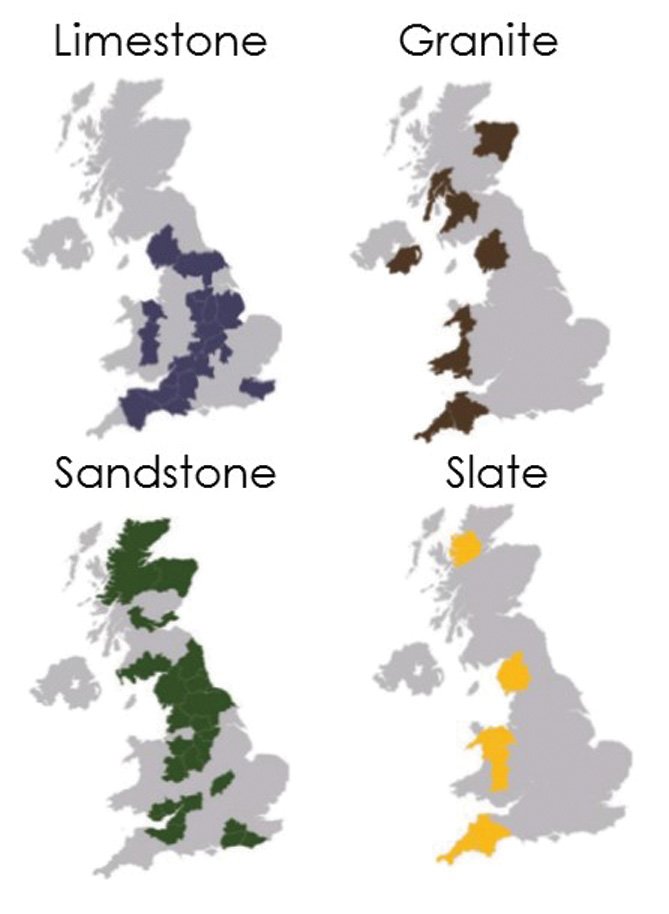Stone federation Great Britain’s Quarry Forum gives its opinion on issues relating to the stone industry from the point of view of companies that extract dimensional stone from opencast and underground quarries and mines.
Companies extracting British stone should be encouraged by this year’s entries in the Natural Stone Awards, the winners of which will be announced at a presentation ceremony and celebratory lunch at the Hotel Russell in Russell Square, London, on 2 December.
Entry to the Awards is closed and judging has begun.
Anyone who has been involved in a construction project involving natural stone in the past three years can enter the Awards. They are, therefore, a useful gauge of both the state of the industry and trends within it.
Stone Federation Great Britain, which runs the Awards, has collated some statistics from this year’s entries – and they make for an interesting and encouraging read, particularly for British quarrying firms.
The number of entries alone is encouraging – 52% more than in 2014, indicating the strength of recovery in the sector in the past three years.
The financial crash hit the natural stone industry hard and it was a challenging time for the indigenous quarrying sector, although stone producers in the British Isles were encouraged to see appropriate local stones being selected for prestigious projects.
It is encouraging to see that the number of entries in the Awards has returned to pre-recession figures, reflecting a rise in the number of top quality projects being undertaken. This marries up with reports from members of the Stone Federation Quarry Forum, who are seeing a steady rise in the number of projects they are being asked to quote for.
This time, 71% of the projects entered in the Stone Awards involved a Stone Federation member firm. Stone Federation strongly believes that its Quarry Forum members are the leading players in the primary supply of natural stone, and this figure reinforces that opinion. Clearly contractors, architects and clients feel the same way.
Altogether, 88% of projects in the Awards involved British Stone.
This is without doubt the most encouraging statistic for the Federation’s quarrying members as it shows that architects are choosing to incorporate British stone on British projects, helping to reduce the carbon footprint of buildings.
This increase in the profile of British stone is something we touched on in this column a few months ago. At that time we looked at how Twitter could provide a useful gauge to the popularity of indigenous stone. A quick glance at the statistics show that in the past 12 months almost half-a-million Twitter users have viewed, engaged with and clicked for more information about content to do with #BritishStone.
Indigenous stone is something architects and designers are talking about and want more information on.
One category of the Stone Awards, New Build Modern Style, had a 90% increase in entries – the highest increase across the eight categories. It indicates a rise in the use of natural stone for commercial cladding projects. We know that a large number of Quarry Forum members supply stone for cladding projects so this is, once again, a highly encouraging statistic.
Jane Buxey, the Chief Executive of Stone Federation, says: “It has been extremely interesting to look through the entry statistics for this year’s Natural Stone Awards. The overall increase in entry numbers is without doubt the most exciting as it shows that the natural stone industry is continuing on a strong path out of recession. However, it is not just the number, but the consistent quality of workmanship and stone selection seen across the entries that is equally as encouraging.”
You can see the 2014 Natural Stone Awards winners gallery at bit.ly/TCF6Yg.

